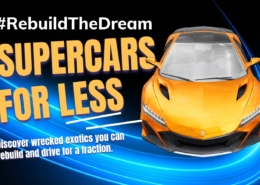 https://auction.ridesafely.com/images/2021/08/top-5-import-cars-to-modify-banner.jpg
865
1440
RideSafely
/images/2025/01/ridesafely-logo.svg
RideSafely2025-10-31 09:00:412025-10-31 12:51:01Top 5 Import Cars To Modify for Street, Track, or Rally
https://auction.ridesafely.com/images/2021/08/top-5-import-cars-to-modify-banner.jpg
865
1440
RideSafely
/images/2025/01/ridesafely-logo.svg
RideSafely2025-10-31 09:00:412025-10-31 12:51:01Top 5 Import Cars To Modify for Street, Track, or RallyGuys love cars. But, while some look upon classic, antique or vintage cars as an oil-spilling, fuse-popping mess, for others who have a real affection for cars, owning one that falls in these categories is a dream. In fact, owning one is an absolute must if you consider yourself a car aficionado.
While the terms “Classic,” “Vintage,” and “Antique” get thrown around a lot when it comes to the jargon used to describe really, really old cars (many times, interchangeably), the reality is, there’s an essential distinction between all three terms that you should know.
Knowing the difference between vintage vs. classic vs. antique cars is important, especially if you happen to live in certain states in the US or need auto insurance (more of that later). For most car enthusiasts who are interested in this niche, being able to make a distinction between classic, antique and vintage cars is one way of not looking completely lost when someone asks you about your ride.
So, without further ado, let’s dive right into the difference between Vintage vs. Classic vs. Antique Cars.
Classic Cars
A classic car is one that is between 20 to 40 years old and in near-perfect condition, as in, close to the original specifications of its manufacturer. It should be noted that even a slight modification can know a car out of this category. According to how you ask, a classic car is also defined as one that was manufactured in the 1920s, but this definition depends on the insurance provider and state laws. While many vehicles from the 60s were once also defined as classic cars, they’ve been towed to an even older category, which has made way for cars that were manufactured in the 80s and 90s, such as, Nissan Skyline or the BMW M3s that frequently adorned the magazines of those eras.
Antique Cars
There’s a thin line between the definition of a classic car and an antique car that’s often blurred by car enthusiasts and folks who just don’t have enough knowledge of cars. While the definition of an antique car also varies depending on who you ask, one classification that’s widely accepted is that the car should be over 45 years old, as in vehicles that were built in the 70s. The car also needs to be in good running order, have all of its original parts along with its original cosmetic features.
But, here again, the distinction has been blurred since many states have their own rules for classifying cars as vintage, antique, or classic. A good example of this can be given by the state of Michigan, which classifies cars that are 26 years old (or older) as antique cars or a “collector’s item.” If you happen to be living in Michigan, you are going to need the help of an appraiser who can decide what category your car falls under. Some cars that do fall under this category now are the Fort Mustang, Chevrolet El Camino, or the Dodge Charger.
Vintage Cars
Cars that were manufactured in the 1930s or prior are normally classified as “vintage cars.” So, these are the vehicles that you would find on the roads that quickly followed their predecessor – the horse-drawn carriage, during the period known as “The Brass Era.”
This name comes from the prominent use of brass in the manufacturing process (fittings, radiators, etc.) of the cars of that era (1896-1915). Surprisingly, these vintage cars were in demand long before they were slapped with the “vintage” classification. The popularity of these Brass Era Cars is still going strong with a large following and car enthusiasts willing to pay top dollar for vintage cars such as the Model T and other coach-built bodied vehicles.
One of the major benefits of collecting vintage cars is that, unlike their classic or antique counterparts, they do not depreciate in value. As in, unlike classic and antique cars, vintage cars don’t lose their value if they are modified. In fact, almost any alterations that are made in terms of design or the engine in a vintage car is not going to result in it losing the “vintage” title. Some of the most popular vintage cars around today include street rods, exotic automobiles, and customized cars, all of which fall under the vintage category.
Know How Your State Classifies Vintage vs. Classic vs. Antique Cars
The rules for car classification (vintage vs. classic vs. antique cars) aren’t set in stone. For instance, many states have their own definition of what’s a classic, vintage, or antique car. The state of California, for instance, uses a broad classification on the term “classic car,” and the California DMV state doesn’t differentiate between vintage vs. classic vs. antique cars; cars that were manufactured after 1922 are lumped under “Historical Vehicle.”
But, vehicles that are rocking a 16-cylinder (or larger) engine under the hood and were manufactured between 1922 and 1965 are classified as… wait for it, “Horseless Carriage.” In case you were wondering, replicas or vehicles that have been modified are not considered part of either category.
Need Insurance for Your Vintage / Antique / Classic Car?
Even insurance providers are free to set their own rules and regulations when it comes to the definition of what’s a classic, vintage, or antique car. For example, according to some vehicle insurance providers, those cars that were manufactured between 1900 and 1979 are categorized as either “Classic” or “Vintage” cars, while those vehicles that have been manufactured from 1980 or later are classified as a “Collector” car.
Knowing the difference between these terms and how insurance classifies older cars can make all the difference when looking for the best car insurance coverage for your classic, vintage, or antique car.
Ending Note
At the end of the day, there are three factors that are always going to determine the true value of a car and its classification; age, historical significance, rarity, and aesthetics. The older the car is, it is likely that there aren’t many of it around, especially those that are in good working order.
A vehicle may have been responsible for heralding in new design philosophy or may have been the first to introduce new technology, which would determine its place when it comes to historical significance.
Rare finds such as limited editions or special editions have turned into collectible items for car enthusiasts. The sense of exclusivity is the main allure of these cars. Finally, there’s the design of the car. It wouldn’t be wrong to say that we all like to have beautiful things, and cars are definitely one of them. An aesthetically pleasing and well-thought-of automobile is quite a sight for any car enthusiast. So, now that you know what separates vintage vs. classic vs. antique cars, you not only own a car that exudes the kind of beauty only angels possess but also have the knowledge to go with it.






Leave a Reply
Want to join the discussion?Feel free to contribute!